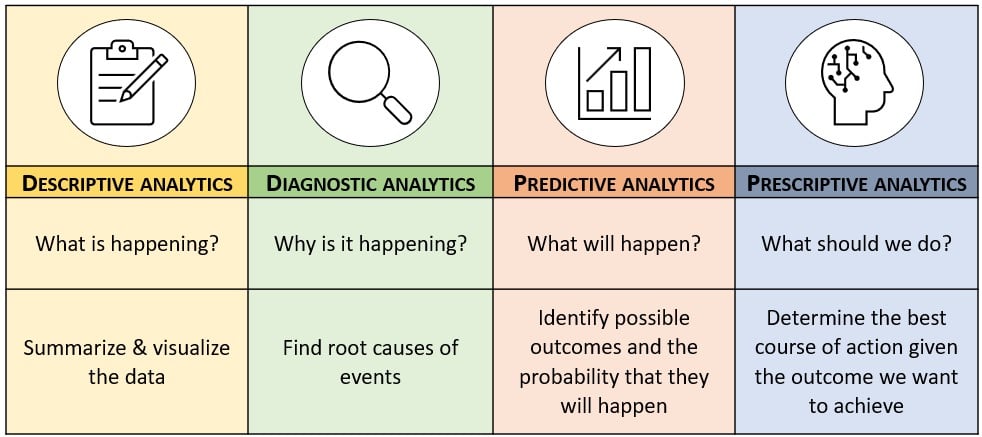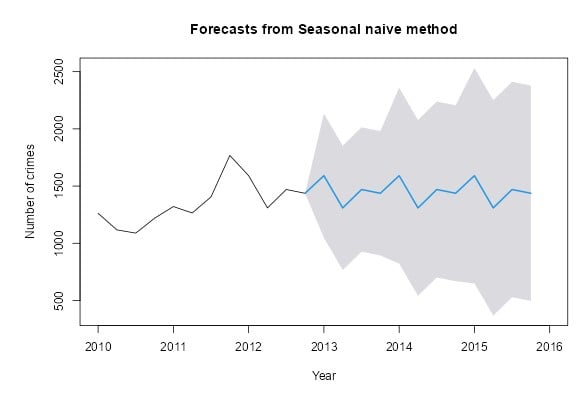Predictive analytics
Introduction to Data Literacy

Carl Rosseel
Head of Business Intelligence Curriculum, DataCamp
Analytics overview

Why use predictive analytics?
- Anticipate most likely outcomes
- Forecast a process or sequence
- Estimate an unknown based on the information that is available
Be careful: there is always a degree of uncertainty associated with predictions

Common techniques
- Machine learning models
- Classification-based
- Predicting cancellations of subscriptions
- Regression-based
- Predicting housing prices based on neighborhood characteristics
- Classification-based
- Time series forecasting
- Predicting sales revenue over time
- Predictive text analysis
- Predicting whether an email is spam or not

Predictive modeling

- Data is split into training and test set for building the predictive model
- Predictions are interpreted and evaluated on the test data, using pre-determined metrics like accuracy (percentage of correct predictions)
Case study: World Cup winner
Which team is most likely to win the next FIFA World Cup?
- Select relevant variables like team ratings, player ratings, rankings, and match difficulty
- Build a predictive model to predict probability of winning or reaching specific phases
Use insights to predict winning probability for each country

Let's practice!
Introduction to Data Literacy

